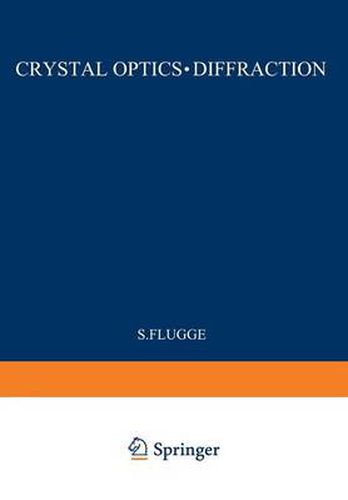Readings Newsletter
Become a Readings Member to make your shopping experience even easier.
Sign in or sign up for free!
You’re not far away from qualifying for FREE standard shipping within Australia
You’ve qualified for FREE standard shipping within Australia
The cart is loading…






This title is printed to order. This book may have been self-published. If so, we cannot guarantee the quality of the content. In the main most books will have gone through the editing process however some may not. We therefore suggest that you be aware of this before ordering this book. If in doubt check either the author or publisher’s details as we are unable to accept any returns unless they are faulty. Please contact us if you have any questions.
139 long ago that, when an extended source of unpolarised light is viewed through a highly dichroic crystalline plate cut normal to one of the optic axes, two dark brushes-the BREWSTER’S brushes-are seen. In the interference between crossed polaroids the dark isogyres do not in general pass through the optic axial directions as they do in the case of transparent crystals. These phenomena can be broadly explained using the approximate theory mentioned in Sect. 43 where the waves propagated along any direction are taken to be linearly polarised. We have seen however that according to the rigorous theory the two waves are really elliptically polarised with non-orthogonal states. Corresponding to this we meet with phenomena which have no parallel whatsoever in the case of trans- parent crystals. Thus, if the incident light is polarised, then even without an analyser behind the plate, feeble interference phenomena-the idiophanic rings- are seen. These arise because the two beams into which the incident light is decomposed along any direction can directly interfere with one another as they are not orthogonally polarised. More striking is the fact that, with an analyser behind the plate, idiophanic interference rings appear even with the incident light completely unpolarised. The explanation of this phenomenon leads us to the concept of the partial coherence between the component non-orthogonal beams into which the incident unpolarised light is split.
$9.00 standard shipping within Australia
FREE standard shipping within Australia for orders over $100.00
Express & International shipping calculated at checkout
This title is printed to order. This book may have been self-published. If so, we cannot guarantee the quality of the content. In the main most books will have gone through the editing process however some may not. We therefore suggest that you be aware of this before ordering this book. If in doubt check either the author or publisher’s details as we are unable to accept any returns unless they are faulty. Please contact us if you have any questions.
139 long ago that, when an extended source of unpolarised light is viewed through a highly dichroic crystalline plate cut normal to one of the optic axes, two dark brushes-the BREWSTER’S brushes-are seen. In the interference between crossed polaroids the dark isogyres do not in general pass through the optic axial directions as they do in the case of transparent crystals. These phenomena can be broadly explained using the approximate theory mentioned in Sect. 43 where the waves propagated along any direction are taken to be linearly polarised. We have seen however that according to the rigorous theory the two waves are really elliptically polarised with non-orthogonal states. Corresponding to this we meet with phenomena which have no parallel whatsoever in the case of trans- parent crystals. Thus, if the incident light is polarised, then even without an analyser behind the plate, feeble interference phenomena-the idiophanic rings- are seen. These arise because the two beams into which the incident light is decomposed along any direction can directly interfere with one another as they are not orthogonally polarised. More striking is the fact that, with an analyser behind the plate, idiophanic interference rings appear even with the incident light completely unpolarised. The explanation of this phenomenon leads us to the concept of the partial coherence between the component non-orthogonal beams into which the incident unpolarised light is split.